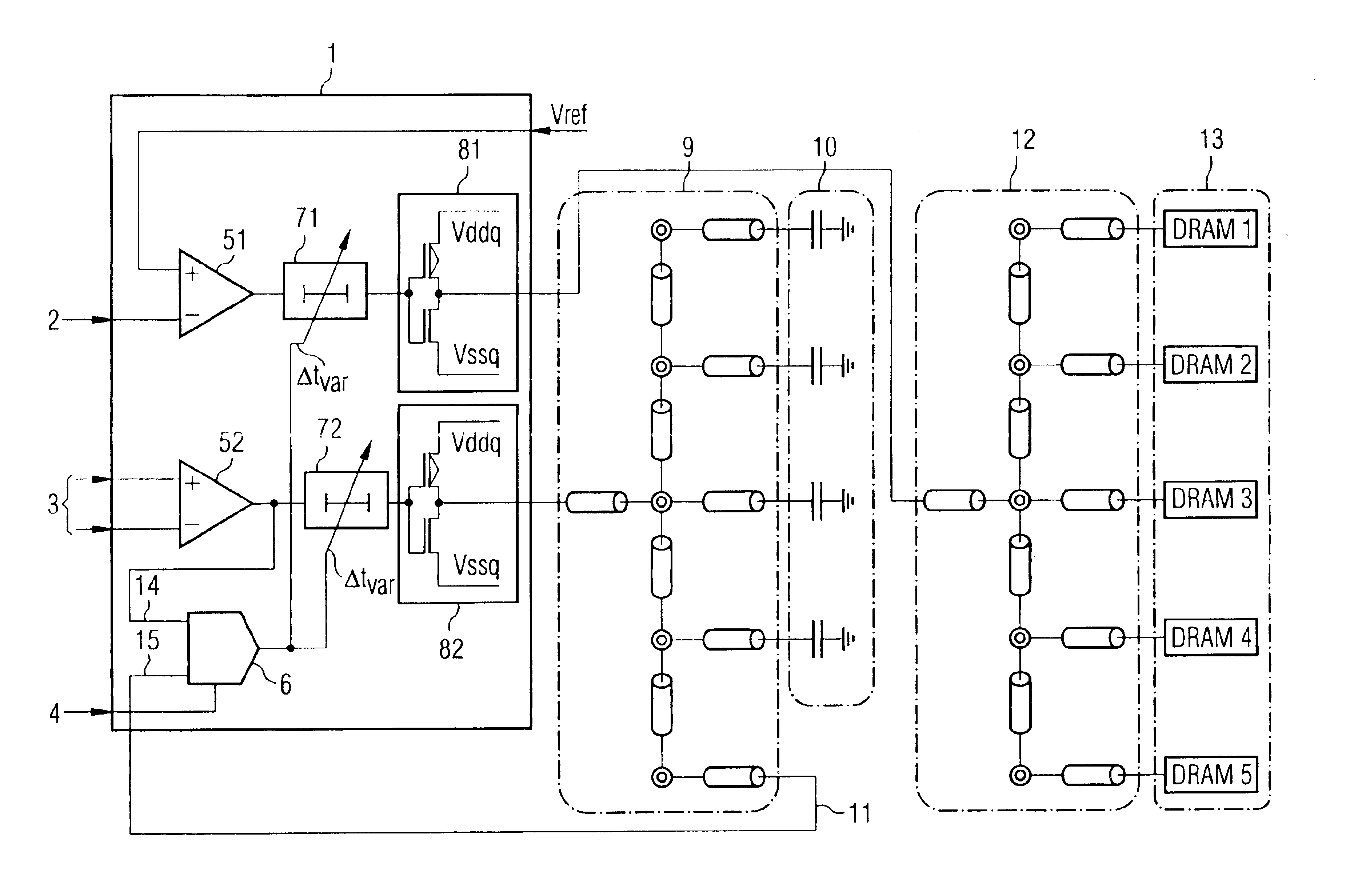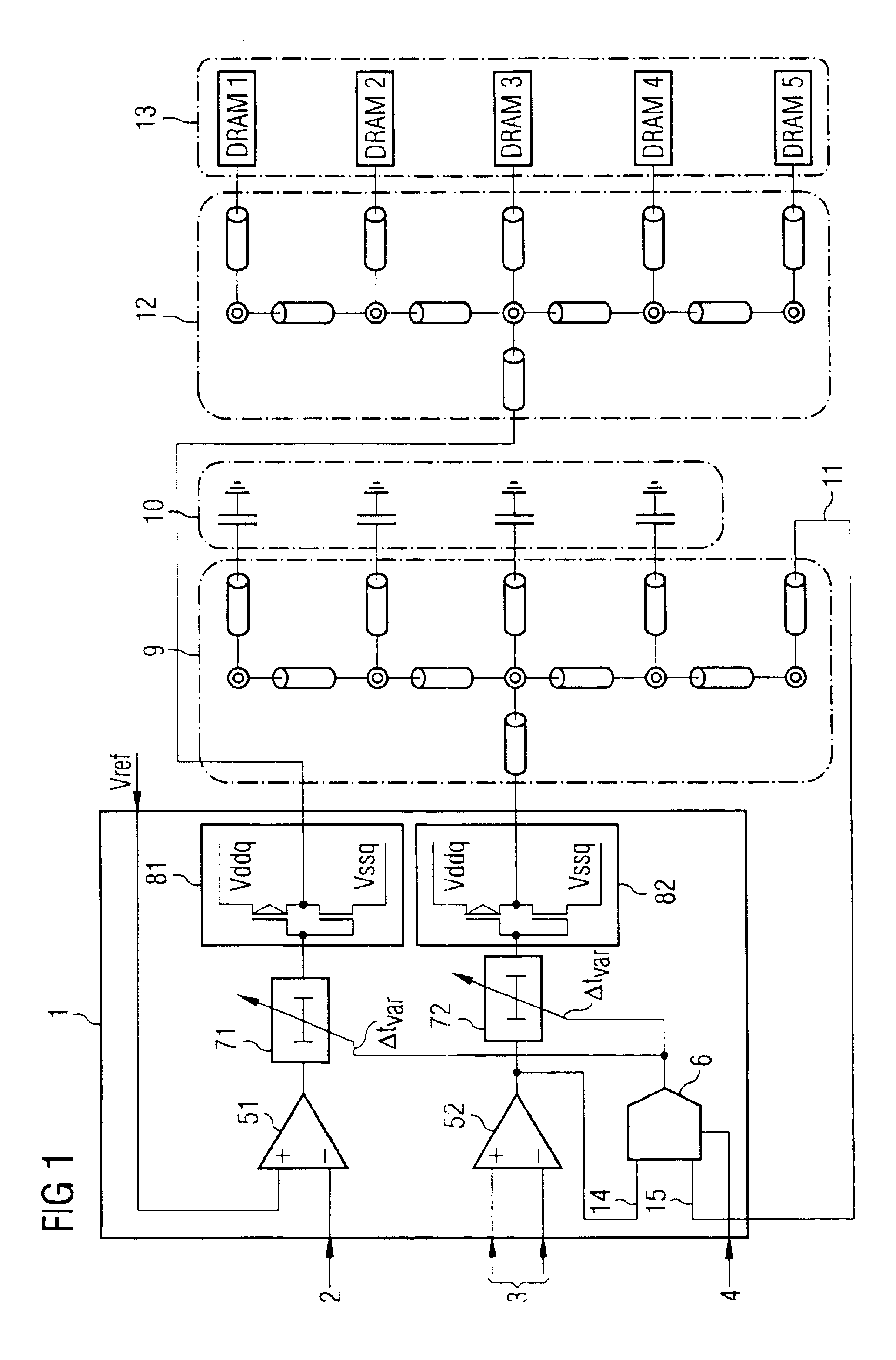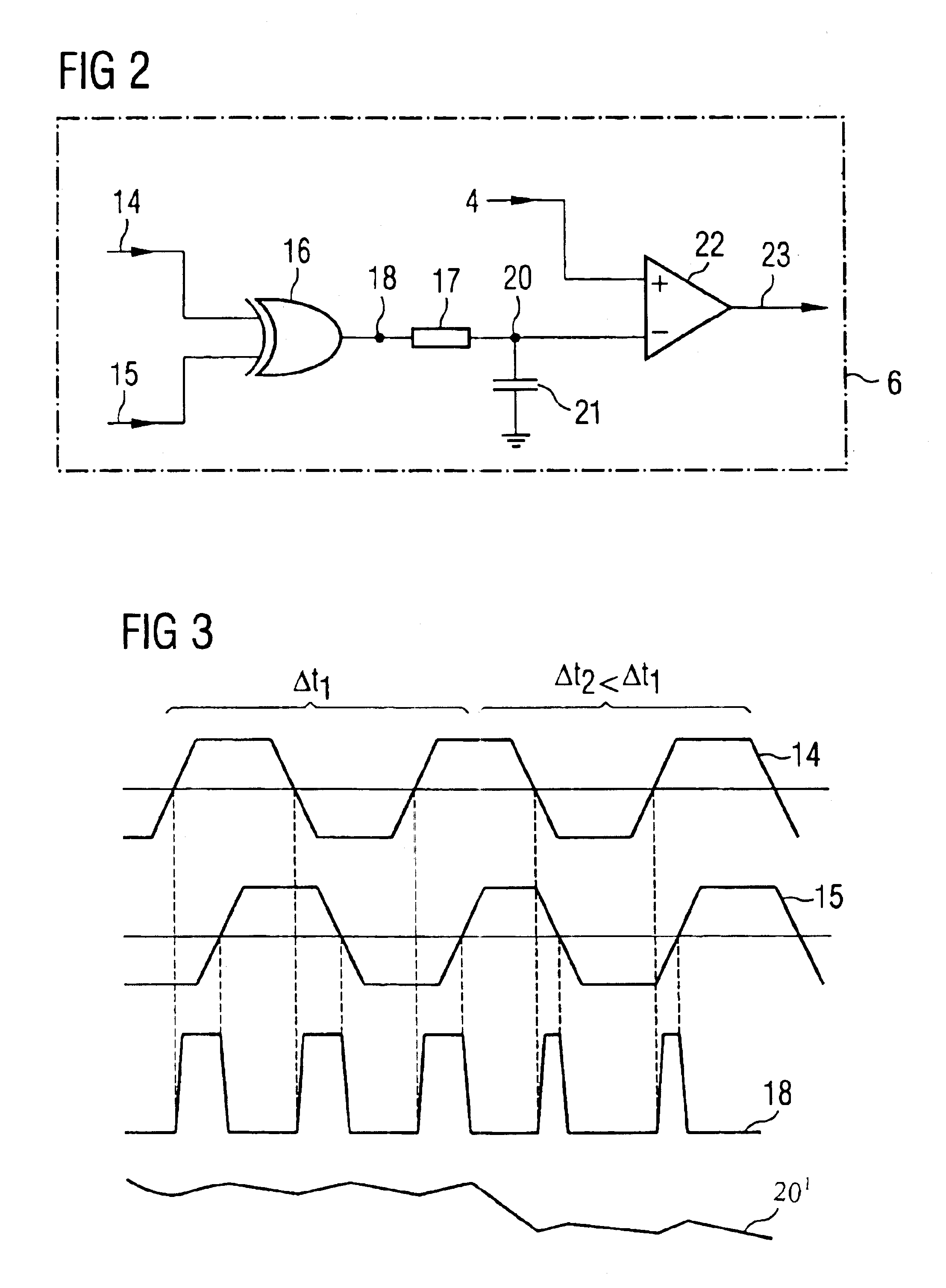Buffer amplifier architecture for semiconductor memory circuits
a buffer amplifier and memory circuit technology, applied in the direction of information storage, static storage, digital storage, etc., can solve the problems of undesirable inability to change the clock delay, the delay time range of registers and buffer amplifier architectures used in conventional semiconductor memory modules provided with registers is often too high,
- Summary
- Abstract
- Description
- Claims
- Application Information
AI Technical Summary
Benefits of technology
Problems solved by technology
Method used
Image
Examples
Embodiment Construction
[0015]The following list of symbols is used consistently throughout the text and drawings.[0016]1 Buffer amplifier architecture[0017]2 Command-address signals[0018]3 Clock signal[0019]4 Reference signal[0020]51, 52 First and second receiver elements[0021]6 Delay detector circuit[0022]71, 72 First, second delay circuits[0023]81, 82 First, second output buffer amplifiers[0024]9 Reference line network[0025]10 Terminating capacitance elements[0026]11 Feedback loop[0027]12 Signal line network[0028]13 DRAM memory chips[0029]14, 15 First and second input for the delay detector circuit 6[0030]16 Exclusive-OR gate[0031]17 Resistor[0032]18 Output of the exclusive-OR gate[0033]20 Output of an integration circuit[0034]21 Capacitor[0035]22 Differential amplifier[0036]23 Output of the differential amplifier 22[0037]80 Register
[0038]Referring to FIG. 1, a buffer amplifier architecture, denoted generally by 1, contains a first receiver element 51, in the form of a differential amplifier for receivi...
PUM
 Login to View More
Login to View More Abstract
Description
Claims
Application Information
 Login to View More
Login to View More - R&D
- Intellectual Property
- Life Sciences
- Materials
- Tech Scout
- Unparalleled Data Quality
- Higher Quality Content
- 60% Fewer Hallucinations
Browse by: Latest US Patents, China's latest patents, Technical Efficacy Thesaurus, Application Domain, Technology Topic, Popular Technical Reports.
© 2025 PatSnap. All rights reserved.Legal|Privacy policy|Modern Slavery Act Transparency Statement|Sitemap|About US| Contact US: help@patsnap.com



